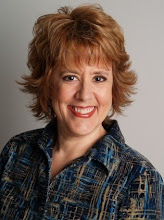Diana,
After talking with Annette last night I ran across an article on search engine optimization for beginners and I thought it might be of interest to you as you venture into web design for clients.
Paul
Diana,
I agree with Paul ...that if you are designing websites for small businesses you should know something about search engine optimization. How the site is designed will have an effect on whether it will rank well in search engines. This may be more than you want to know, or more than you need if you're designing sites for small, regional companies that will not need to rank highly on search engines, though they would do well to get on the local search results.
For example, besides placement of the keywords in the meta tags and alt tags, the location of the keywords in the text on the actual page does play a small role. It's best to have the main keywords near the top of the page. The article is right about keyword frequency...not to overstuff the pages, but what happens out there in the real world is keyword frequency does matter, but only relative to the other websites that rank in the top 10 spots for that keyword. You have to do what they're doing. I have a piece of software that will tell me this. Oh, and each page needs a minimum amount of text on it so when the search engines spiders read it they can tell what the page is about. The minimum is between 250 and 500 words.
Also, all sites now need an xml site map, which is like a table of contents. That site map needs to be submitted to the search engines and updated if you change the title tags. You can get one made for free at www.xml-sitemaps.com then submit it to Google Webmaster Central. The site also needs to have plain text navigation, usually at the bottom of each page, because search engine spiders cannot read navigation buttons (which are images or Flash).
All images need to have "alt tag" for 2 reasons. They are required for browser compatibility and they are required for people who are blind (their computer reads the pages aloud to them and so they need to know there's a button there). Oh, and as far as images on a webpage, images are usually large and slow loading files, so always compress images before putting them on the page or keep the use of images to a few. If your page takes longer than 8 seconds to load on the slowest dial up modem, you lose about 80 percent of visitors....they won't wait.
I have made search engine optimization my area of expertise in the last few years and would disagree with the article Paul sent you on one point...that of inbound links. For high rankiings, depending on the keyword, getting quality, relevant inbound links is essential for high search engine rankings.
The other things that affect search engine rankings are the amount of traffic to the site, the age of the site, and the competitiveness of the keywords. I tell my clients not to expect their site to get high rankings until it's at least 3 months old. If they need to generate traffic right away, I recommend a Pay Per Click advertising program like Google AdWords.
Finally, what the article overlooks is that not all the client's desired keywords are something that people are searching, so when writing for the web, I help my clients select keywords that are being searched at a high frequency, so that the site will get traffic. There are alot of keyword selection tools available for free, like WordPot, WordTracker.
This is probably more than you need to know, but if you continue designing websites, clients will be asking you the next day after their site has gone live why they can't find it on Google (answer: it takes a few weeks for Google to find your site, then index it).
Annette Vaillancourt
Girl Geek Web Designs: Custom Web Design and SEO for Small Businesses on a Budget
Call for a Free Initial Consultation
1-877-866-4335
Subscribe to:
Post Comments (Atom)

1 comment:
This was a very informative article. I will read your blog often.
Post a Comment